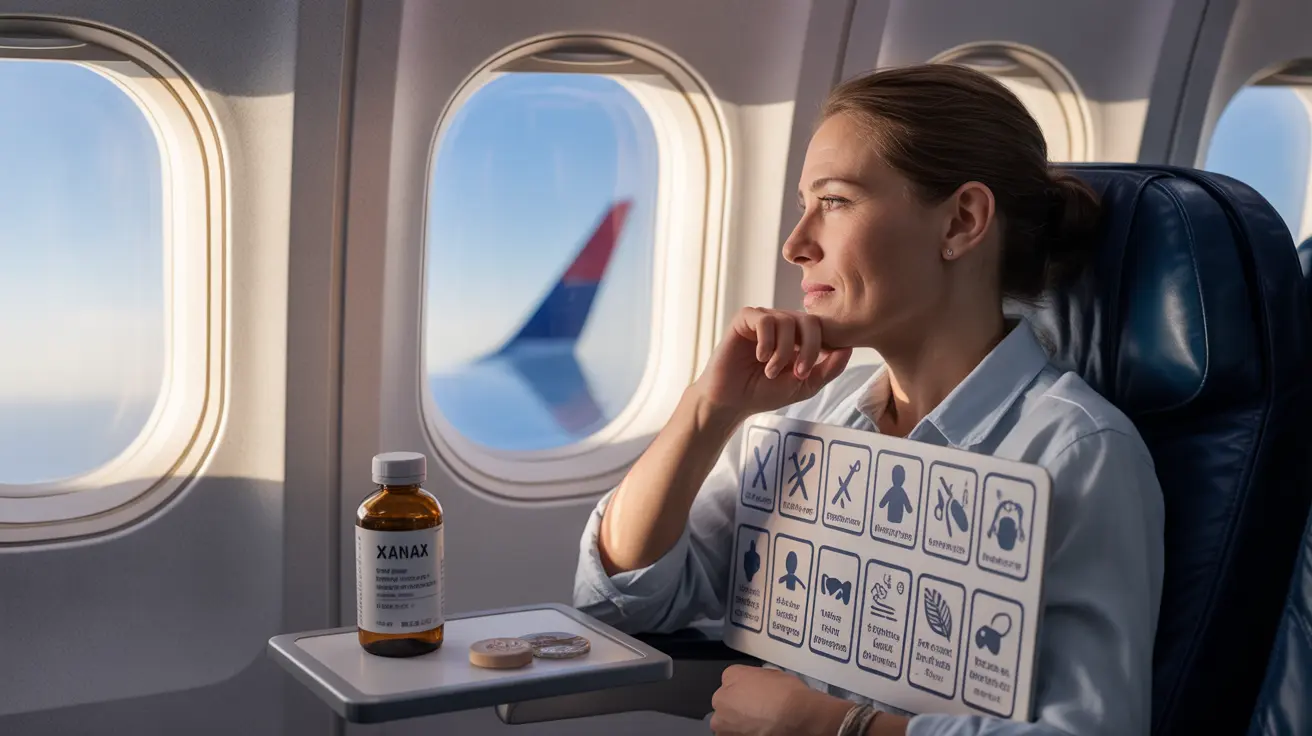Fear of flying affects millions of people, and some turn to Xanax (alprazolam) as a solution for flight anxiety. While this prescription medication can provide temporary relief, it's crucial to understand both its risks and potential consequences when used specifically for air travel.
Before considering Xanax for flying, it's essential to be fully informed about its effects, safety concerns, and alternative options that might be more appropriate for managing flight-related anxiety.
Understanding Xanax and Its Effects During Air Travel
Xanax belongs to a class of medications called benzodiazepines, which work by enhancing the effects of GABA, a natural calming chemical in the brain. While effective for anxiety relief, its use during flights comes with specific considerations and potential risks.
The medication typically takes effect within 30-60 minutes and can last for several hours, potentially affecting your entire flight experience and even your post-flight activities.
Safety Concerns and Risks
Physical and Cognitive Effects
Taking Xanax during flights can significantly impact your physical and mental capabilities. The medication may cause:
- Drowsiness and decreased alertness
- Impaired coordination and reaction time
- Confusion or memory problems
- Difficulty maintaining balance
- Potential breathing issues at high altitudes
Emergency Response Capabilities
One crucial consideration is how Xanax affects your ability to respond during emergency situations. The medication can significantly impair your judgment and reaction time, potentially compromising your safety if quick action becomes necessary.
The Danger of Mixing Xanax with Alcohol
Combining Xanax with alcohol during flights is extremely dangerous. This combination can lead to:
- Severe drowsiness and sedation
- Dangerous respiratory depression
- Increased risk of serious side effects
- Potentially life-threatening complications
Safer Alternatives for Managing Flight Anxiety
Instead of relying on Xanax, consider these evidence-based alternatives for managing flight anxiety:
Non-Medication Options
- Cognitive behavioral therapy (CBT)
- Exposure therapy
- Mindfulness and meditation techniques
- Deep breathing exercises
- Professional fear of flying programs
Natural Remedies
Several natural approaches can help manage flight anxiety without the risks associated with Xanax:
- Lavender essential oil
- Stress-relief supplements (after consulting a healthcare provider)
- Pressure point wristbands
- Progressive muscle relaxation
- Guided visualization techniques
Frequently Asked Questions
What are the risks of taking Xanax for anxiety during a flight?
The main risks include impaired judgment, excessive sedation, potential breathing difficulties at altitude, and reduced ability to respond in emergencies. Long-term use can also lead to dependency and tolerance.
Can using Xanax for flying cause dependence or addiction?
Yes, even occasional use of Xanax for flying can lead to psychological dependence. Regular use increases the risk of physical dependence and addiction, especially if used frequently for air travel.
Are there safer alternatives to Xanax for managing fear of flying?
Many safer alternatives exist, including cognitive behavioral therapy, exposure therapy, mindfulness techniques, and professional fear of flying programs. These methods address the root cause of flight anxiety without medication risks.
How does Xanax affect your ability to respond in an airplane emergency?
Xanax significantly impairs coordination, alertness, and reaction time, which could prevent you from responding effectively during an emergency situation. This reduced responsiveness could compromise your safety.
Is it safe to mix alcohol and Xanax when flying?
No, combining alcohol and Xanax is extremely dangerous. This combination can cause severe sedation, dangerous respiratory depression, and potentially life-threatening complications. It should always be avoided.




